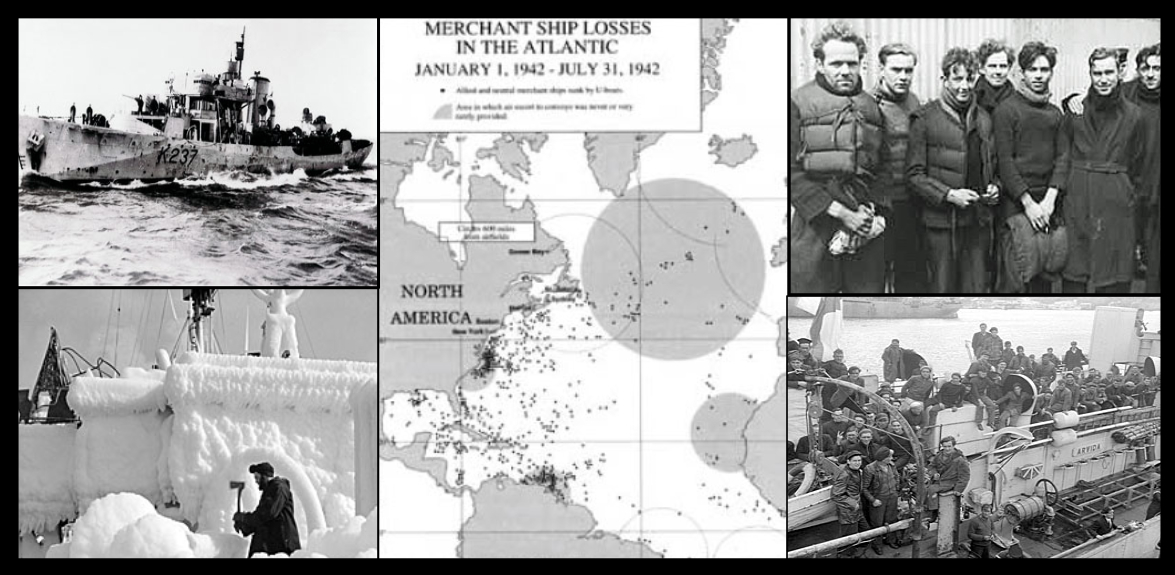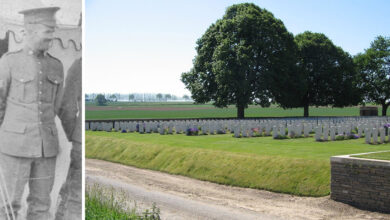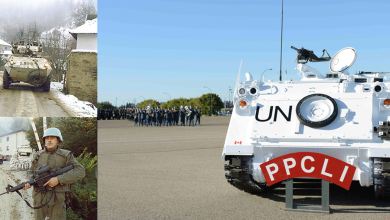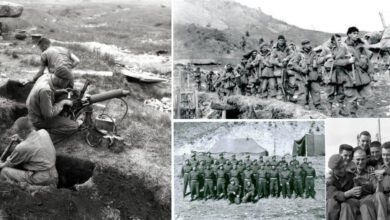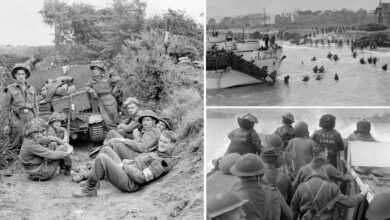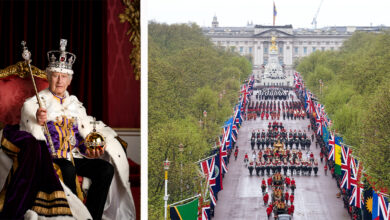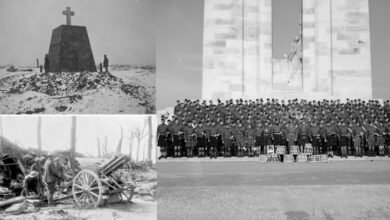History
Remembering the Battle of the Atlantic
Above image: Top left, built in 1942, HMCS Halifax was typical of the cheap, seaworthy corvettes built to counteract the German U-boat menace. Images courtesy Library and Archives Canada/PA-145502. Bottom left, HMCS Brantford covered with ice, February 1944. Image courtesy Canada Dept of National Defence, Library and Archives Canada/PA-136146. Middle image Merchant ship losses in the Atlantic. Top right Merchant Navy survivors from sunken British vessels SS Ashantian and SS Wanstead, photographed in St. John’s, Newfoundland in April 1943. Photo by Gerald Milne Moses, courtesy Canada Dept of National Defence, Library and Archives Canada/PA-137795. Bottom right, survivors of torpedoed merchant ship aboard HMCS Arvida, St John’s, Nfld, September 1942. Image courtesy Canada Dept of National Defence, Library and Archives Canada/PA-13628.
The 78th anniversary of the Battle of the Atlantic, the longest campaign of the Second World War, was marked this week across Canada. The anniversary allows Canadians to remember the sacrifices of thousands of brave Canadian sailors.
To mark this important day, this year’s events acknowledged the critical contributions made by Royal Canadian Navy Volunteer Reserve citizen-sailors from 1939 to 1945, according to a Department of National Defence (DND) press release. Additionally, the Canadian naval community holds events on the first Sunday in May to recognize those who lost their lives in this campaign.
“The Battle of the Atlantic was the longest, and one of the most important, campaigns of the Second World War. It was won through the courage, determination, and strength of thousands of Canadians who served and fought – or built and supported the warships which did. This year also marks the 100th anniversary of the Naval Reserve, which totalled over 80 per cent of the Royal Canadian Navy during this vital battle. Today, we remember them, alongside all those who fought and sacrificed at sea for our freedom,” said VAdm. Angus Topshee, Commander of the Royal Canadian Navy.
Public events were also held in May aboard His Majesty’s Canadian Ship (HMCS) Haida in Hamilton, ON.
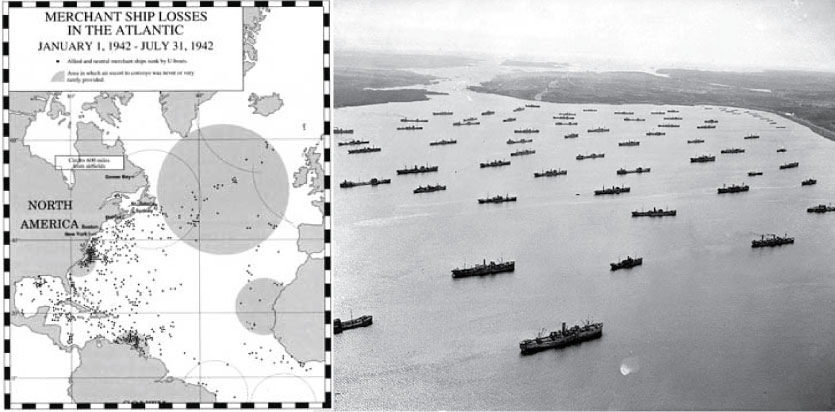
Remember the Battle of the Atlantic
The battle, which took place from Sept. 1939 to Germany’s surrender in May 1945, was a crucial battle in determining who gained control of the Atlantic Ocean. The Allies needed control to send men and supplies to Europe, while the Germans needed control to cut off the supplies.
According to Veterans Affairs Canada, the Battle of Atlantic brought the war to Canada’s doorstep, with U-boats torpedoing ships within sight of Canada’s East Coast and even in the St. Lawrence River. Cities on Canada’s East Coast became involved in the battle with Halifax and Sydney, Nova Scotia, and St. John’s, Newfoundland, playing crucial roles.
The Royal Canadian Navy, the Royal Canadian Air Force and even Canada’s Merchant Navy played a crucial role in winning the Battle.
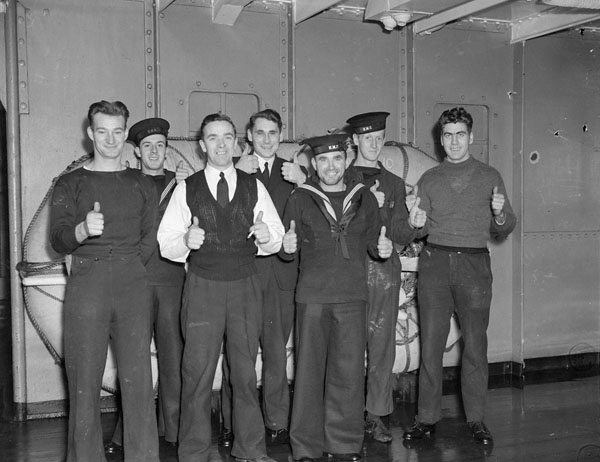
Canada’s Merchant Navy
Canada’s Merchant Navy played a crucial role in the Battle of the Atlantic. Because Canada had only 38 merchant ships at the beginning of the conflict, plans had to be made to expand the Merchant Navy. As a result, the Merchant Navy played a critical role in supplying Britain with aid. An estimated 10,000-tonne merchant ship could provide enough “foodstuffs” to feed 225,000 people for a week. Cargo carried by the fleet included everything from clothing, fuel, steel, aluminum, lumber, aircraft, tanks, jeeps, trucks, guns, ammunition, and anything else that could be required for the war effort.
Because of this, Merchant Ships were often the target of German attacks. However, the people of the Merchant Navy showed incredible bravery during this time and gallantly delivered on their job to support the war effort.
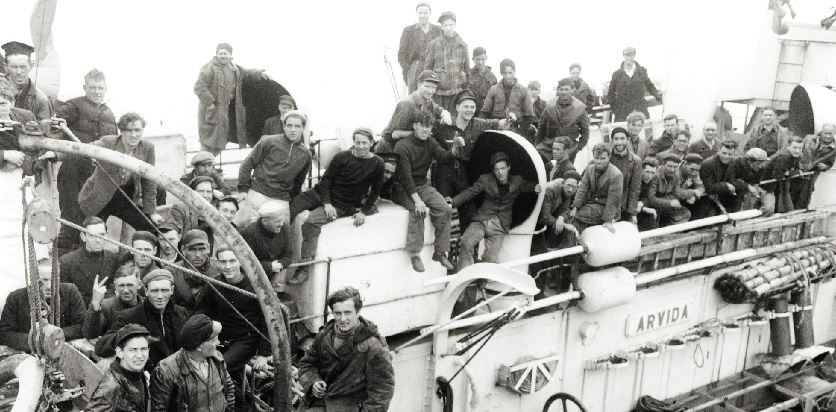
Sacrifices
More than 1,600 Merchant Navy personnel from Canada and Newfoundland were killed during the Battle of the Atlantic. According to VAC, percentage-wise, their casualty rate was higher than those of any of Canada’s fighting services during the Second World War—one out of every seven Merchant Navy sailors who served was killed or wounded.
The RCN and RCAF also paid a high toll in the Battle of the Atlantic. Most of the 2,000 RCN officers and men who died during the war were killed during the Battle of the Atlantic, as were 752 members of the RCAF.


